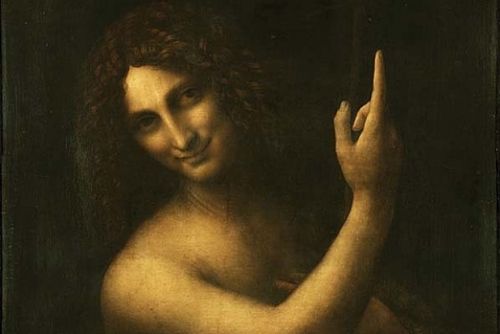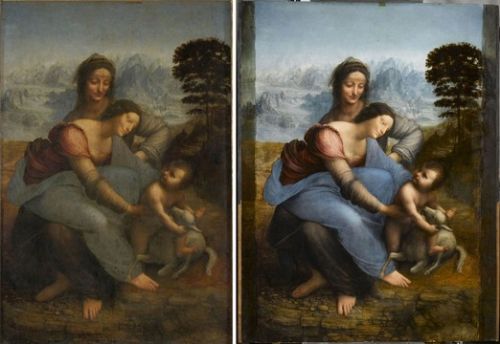The museum is opting for total transparency ahead of a sensitive conservation project

The restoration of Leonardo da Vinci’s work is a touchy subject for the Louvre. The museum weathered a storm over the cleaning of his painting of The Virgin and Child with St Anne (1503-19) and had to proceed with caution on La belle ferronière (1490-96). So it is not leaving anything to chance with the forthcoming treatment of St John the Baptist (1513-16). “There is major media pressure,” says Sébastien Allard, the director of the department of paintings.
Experts are regularly divided on the issue of restoring Leonardo’s paintings, only around 15 of which are known to be extant. In 2011-12, work done on his St Anne stirred debate, with some in favour of thinning much of the varnish and others who thought the removal should be more moderate. After the restoration was done, Ségolène Bergeon-Langle, the former director of painting restoration services for the French national museums, thought that the Virgin’s face had lost some of its contouring (not everyone shared this opinion).
She was equally concerned about the subsequent restoration of La belle ferronière, which was completed in 2015, but she now considers this a success because it was “moderate in its reductions”, she told our sister paper Le Journal des Arts.
“Prudence and pragmatism, that’s our doctrine,” Allard told a group of invited journalists this week, as he explained the ins and outs of the forthcoming restoration of St John the Baptist. The painting will be taken down from its spot in the Grande Galerie, just next door to the Mona Lisa, by the end of January. While the last restoration of the work dates back to the 19th century, layers of varnish—not always documented—have been added to “give depth to the work”. These have oxidised, yellowed and browned, while dirt has accumulated between the layers of varnish.
The painting shows the smiling saint from the waist up, seemingly lit from within, while the animal skin he wears and the cross he holds are barely discernable against the sombre background. Allard says that when the painting was studied closely, it appears that the staff-like cross is bathed by a subtle light that is no longer visible. “It is necessary to thin the varnish to get back the clarity of the painting,” he said.
Regina Morieara will lead the restoration, in collaboration with the restoration and research centre for French museums (C2RMF). Bergeon-Langle calls this an “excellent choice”, since Morieara conserved Rembrandt’s Bathsheba at Her Bath (1654) “by working in a very subtle way, not over-cleaning and kept the painting’s softness”.

An international committee of around ten experts is being chosen to oversee the work. “It will be advisory, but not have the stamp of approval,” Allard says, adding that all da Vinci specialists will be able to come and get a closer look at the restoration. This could reveal if the “somewhat abrupt” drawing of the arm and hand is the result of an overly-aggressive cleaning that took place in the 16th or 19th century, or the incomplete state da Vinci intended for what is largely recognised as his last work.
And to calm any concerns, while the Louvre is organising an exhibition on Leonardo in the coming years, the museum promises that there are no plans to restore the Mona Lisa any time soon.

